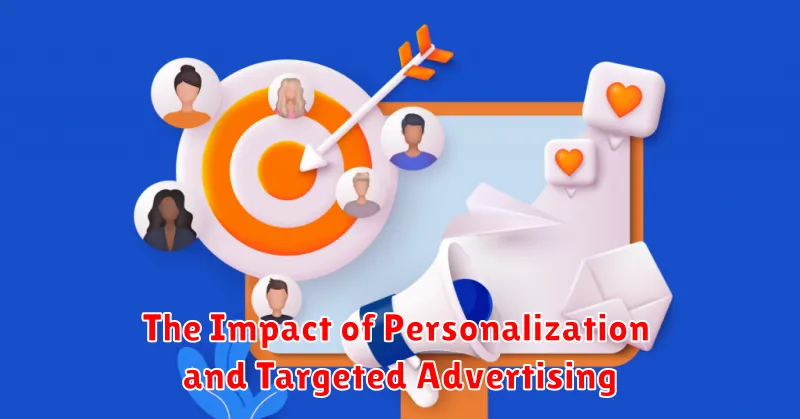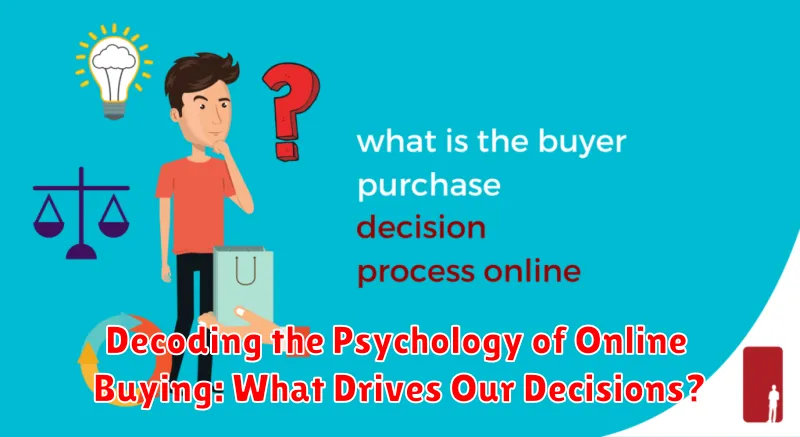In today’s digital age, online buying has become ubiquitous, transforming how we acquire goods and services. Understanding the psychology behind these online buying decisions is crucial for both consumers seeking to make informed choices and businesses aiming to optimize their online presence. This article delves into the complex interplay of psychological factors influencing our online buying behavior, exploring the motivations, biases, and cognitive processes that drive us to click that “add to cart” button. From the persuasive power of online reviews and social media influence to the impact of website design and marketing strategies, we will decode the key elements shaping our choices in the digital marketplace.
By exploring the psychology of online buying, we aim to shed light on the intricate decision-making processes that govern our online purchases. We’ll examine the role of emotions, heuristics, and cognitive shortcuts in shaping our preferences and influencing our susceptibility to online marketing tactics. Unraveling the psychology behind online buying empowers consumers to become more aware of the factors driving their purchasing habits, enabling them to make more conscious and deliberate decisions in the bustling online marketplace. Furthermore, it equips businesses with valuable insights to craft more effective strategies for connecting with their target audiences and driving online sales.
The Power of Social Proof and Online Reviews
Social proof plays a significant role in shaping our online buying decisions. We often look to others for validation before making a purchase, especially when faced with uncertainty. This tendency stems from our innate desire to conform and make the “right” choice.
Online reviews act as a powerful form of social proof. Reading about positive experiences from other customers can build trust and credibility, significantly influencing our perception of a product or service. Negative reviews, conversely, can quickly dissuade us from making a purchase.
Star ratings and the sheer number of reviews also contribute to the impact of social proof. A product with hundreds of positive reviews is often perceived as more reliable and desirable than one with only a few, even if the average rating is similar.
The influence of social proof highlights the importance of cultivating positive online reviews and managing online reputation for businesses seeking to thrive in the digital marketplace.
Scarcity and Urgency Tactics: How They Influence Us
Scarcity and urgency principles are powerful psychological tools employed in online marketing to drive purchasing behavior. Scarcity leverages the fear of missing out (FOMO) by highlighting limited availability of a product or service. This perceived rarity increases desirability and encourages immediate action.
Urgency, on the other hand, uses time constraints to compel purchases. Tactics like flash sales, limited-time offers, and countdown timers create a sense of pressure, pushing consumers to make quick decisions before the opportunity disappears. These tactics exploit our natural aversion to loss, suggesting we’ll miss out on a valuable deal if we delay.
Examples of these tactics include phrases like “limited stock,” “only a few left,” “sale ends soon,” or displaying a dwindling stock counter. These strategies, while effective, must be used responsibly. Overuse or manipulation can erode consumer trust and damage brand reputation.
The Role of Emotions in Online Purchase Decisions
Emotions play a significant role in shaping online buying behavior. Consumers often make purchases based on how a product or service makes them feel, rather than purely rational considerations.
Positive emotions such as excitement, joy, and satisfaction can drive purchasing decisions. A well-crafted marketing campaign can evoke these feelings and create a strong desire for a product. For example, a heartwarming advertisement might trigger feelings of nostalgia, leading to a purchase.
Negative emotions can also influence online purchases. Fear of missing out (FOMO), anxiety about a problem, or the desire to alleviate boredom can prompt impulsive buying. Marketing strategies that highlight scarcity or emphasize a product’s ability to solve a problem often tap into these emotions.
Understanding the emotional drivers behind purchasing decisions is crucial for businesses. By crafting marketing messages that resonate with consumers on an emotional level, companies can significantly increase their chances of converting browsers into buyers.
Visual Cues and Website Design: Creating a Compelling Experience
Visual cues play a significant role in shaping online consumer behavior. A website’s design is the first point of contact, influencing a shopper’s initial impression and subsequent actions. Elements like color, typography, and imagery work together to create an overall aesthetic that can evoke specific emotions and perceptions of trust and credibility.
Effective website design utilizes visual hierarchy to guide the user’s eye and prioritize information. Clear navigation and a well-structured layout simplify the buying process, making it more intuitive and enjoyable. The use of high-quality product images, videos, and even interactive 3D models allows customers to thoroughly examine products, creating a sense of tangible ownership and reducing purchase uncertainty. White space is also crucial, providing visual breathing room and preventing the page from feeling cluttered.
The Impact of Personalization and Targeted Advertising

In today’s digital landscape, personalized experiences have become a key driver of online buying behavior. Targeted advertising, powered by sophisticated data analysis and algorithms, plays a significant role in shaping consumer preferences and influencing purchasing decisions.
By leveraging browsing history, purchase patterns, and demographic data, marketers can deliver highly relevant advertisements to specific customer segments. This personalization fosters a sense of individual attention, making consumers feel understood and valued. Consequently, they are more likely to engage with ads and products that align with their unique needs and interests.
Furthermore, personalized recommendations and product suggestions, often based on collaborative filtering and machine learning, enhance the overall online shopping experience. By showcasing products that align with past purchases or browsing behavior, businesses effectively guide consumers towards items they are more likely to purchase. This personalized approach simplifies the decision-making process and increases the likelihood of conversion.
Understanding the Customer Journey and Pain Points
The customer journey in the online realm encompasses several distinct stages, each presenting unique pain points that businesses must address. Understanding these stages is crucial for optimizing the online buying experience and driving conversions.
The journey typically begins with awareness, where the customer identifies a need or problem. A common pain point here is information overload and difficulty finding relevant solutions. Next is consideration, where the customer evaluates available options. Pain points at this stage include complex comparison processes and a lack of clear product information.
The decision stage involves choosing a specific product or service. Pain points may include concerns about security, complicated checkout procedures, and hidden fees. Finally, the post-purchase experience includes delivery, customer service, and potential returns. Here, pain points often revolve around slow delivery, unresponsive customer support, and difficult return processes. Addressing these pain points at each stage is essential for fostering a positive customer experience and encouraging repeat business.
Building Trust and Credibility Online

In the digital marketplace, trust is paramount. Consumers are hesitant to share personal information or make purchases from websites they perceive as untrustworthy. Transparency is key to building this trust. Clearly displaying contact information, privacy policies, and terms of service helps assure customers of legitimacy.
Social proof plays a significant role in establishing credibility. Testimonials, reviews, and endorsements from other customers build confidence in potential buyers. Showcasing security badges and certifications from recognized authorities further strengthens this trust. Secure payment gateways and clear refund policies are crucial for alleviating concerns about financial risk.
A professional website design with high-quality content contributes to a positive first impression. Consistency in branding and messaging across all platforms reinforces a sense of reliability and professionalism. Prompt and helpful customer service is essential for resolving issues and building lasting relationships with customers.
Leveraging Cognitive Biases for Effective Marketing
Cognitive biases, inherent shortcuts in our thinking, significantly influence online purchasing decisions. Understanding and ethically leveraging these biases can enhance marketing effectiveness.
Scarcity bias can be utilized by highlighting limited-time offers or low stock levels, creating a sense of urgency. Phrases like “only a few left” or “sale ends soon” nudge customers towards quicker purchases.
Social proof leverages the human tendency to follow others. Showcasing testimonials, reviews, and high purchase numbers builds confidence and encourages potential buyers.
The anchoring bias uses an initial piece of information to influence subsequent judgments. Presenting a higher original price before a discounted price makes the sale appear more attractive.
Loss aversion, the tendency to feel the pain of a loss more strongly than the pleasure of an equivalent gain, can be employed by framing offers in terms of what customers stand to lose by not purchasing.

